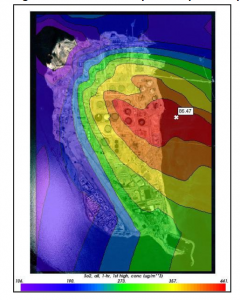Basic Assessment, Environmental Impact Assessment, Atmospheric Emission Licences and Air Quality Impact Assessment in the South African Context
What is a Basic Assessment (BA)?
A Basic Assessment is required in terms of the Listing Notice 1 (GN: 9831) and 3 (GN: 9852) of the National Environmental Management Act, 1998 (Act No. 107 of 1998). A Basic Assessment is usually required for smaller scale activities, the impacts of which are generally known and can be easily managed. Typically, these activities are considered less likely to have significant environmental impacts and, therefore, do not require a full-blown and detailed Scoping and Environmental Impact Assessment.
Basic Assessment still requires public notification and participation, consideration of the potential environmental impacts of the activity, assessment of possible mitigation measures, and an assessment of whether there are any significant issues or impacts that might require further investigation.
In terms of the relationship between the Basic Assessment process and Atmospheric Emission Licences, a Basic Assessment will be required where there is an expansion to existing facilities, and where the expansion will result in the need for a new, or amendment of the existing Atmospheric Emission Licence.
Example:
The client operates a sawmill and holds an Atmospheric Emission License for its boilers. The client plans to add an additional boiler to increase the facility’s wood drying capacity. As the facility will be expanded, and the existing Atmospheric Emission Licence needs to be amended (due to material changes in the emissions profile), hence a Basic Assessment is required.
What is an Environmental Impact Assessment (EIA)?
An EIA is a thorough, systematic process of identifying, assessing, and reporting potential environmental impacts of a proposed development, while providing sufficient information to aid decision-making related to environmental management as well as measures to mitigate identified negative impacts. The EIA process also involves public notification and participation as well as various specialist reports which will inform the study. An EIA is required when activities described in Listing Notice 2 (GN: 9843), are triggered. Listing 2 are those activities that (due to their nature and/or extent) are likely to have significant impacts that cannot be easily predicted. They are therefore higher risk activities that are associated with potentially higher levels of pollution, waste and environmental degradation.
In terms of the relationship between the EIA process and Atmospheric Emission Licences, an EIA is required for the construction of facilities or infrastructure for any process or activity which requires an Atmospheric Emission License.
Example:
The client plans to build a new facility for the purposes of hot dip steel galvanizing. Hot dip galvanizing is a listed activity in terms of Section 21 Air Quality Act (Subcategory 4.22). As the construction and operation of the facility will require an Atmospheric Emissions Licence, an EIA is required as part of the environmental authorisation process.
In summary:
- Expansion to a facility which holds an Atmospheric Emission Licence or requires a new Atmospheric Emission Licence = Basic Assessment
- Construction of a new facility which requires an Atmospheric Emission Licence = Environmental Impact Assessment
What is an Air Quality Impact Assessment (AQIA)?
An Air Quality Impact Assessment is a specialist study which aims to assess the impact of atmospheric emissions from a facility4 on the receiving environment.5 This is primarily achieved through Air Dispersion Modelling (ADM) together with an evaluation of potential impacts against prescribed criteria, including a comparison against National Ambient Air Quality Standards (NAAQS). Air Quality Impact Assessments are often required for Projects that have significant emissions to atmosphere, and the study forms part of the Basic Assessment or EIA process.
Example of a Air Dispersion Model
Objectives of an AQIA
The objectives of an Air Quality Impact Assessment most commonly include:
- Assessment of a facility’s compliance with applicable air quality legislation such as NAAQS, odour and dust regulations;
- To gain and understand the potential impact of a facility’s emissions on the receiving environment 2;
- To propose possible alternatives, mitigation and monitoring measures to minimise potential impacts.



